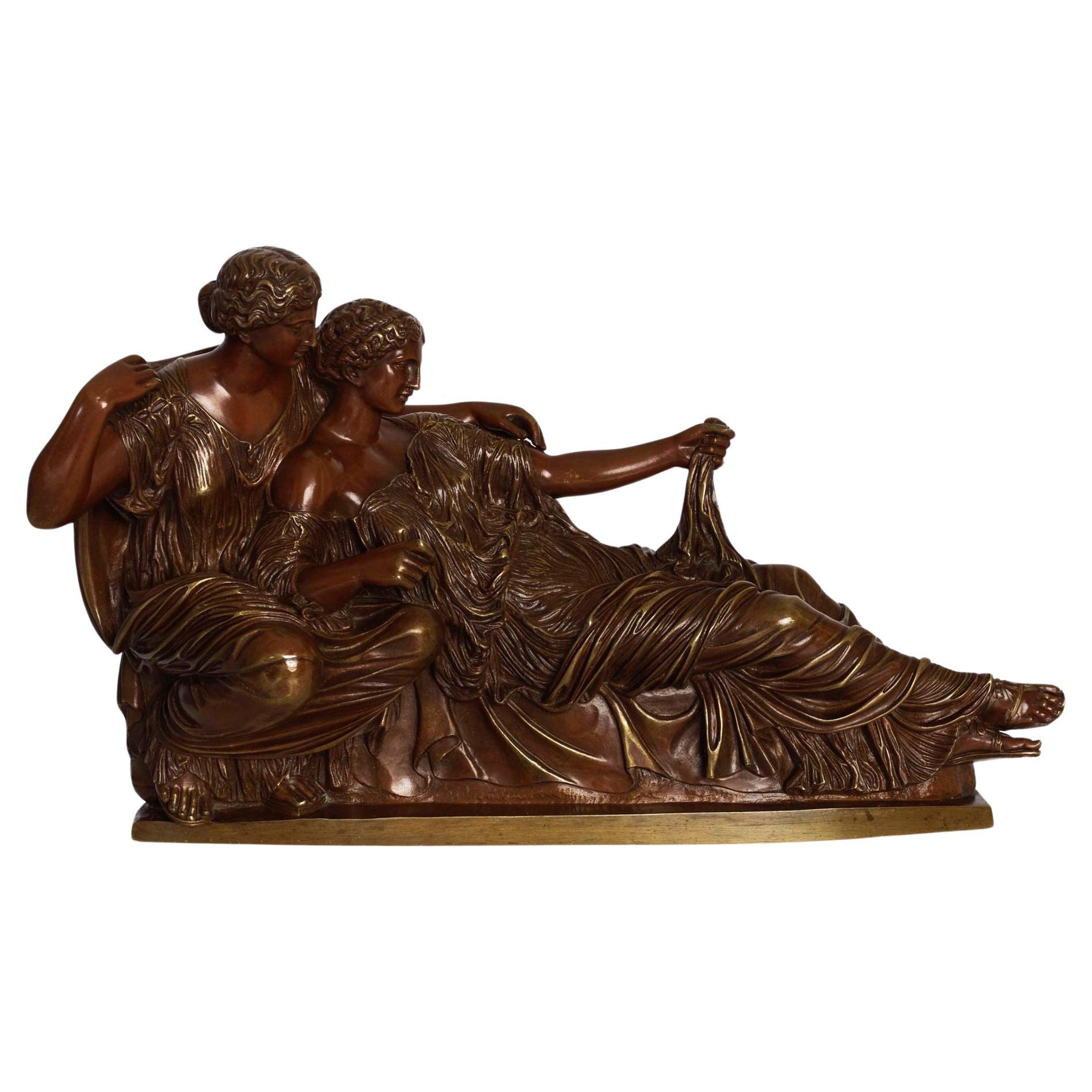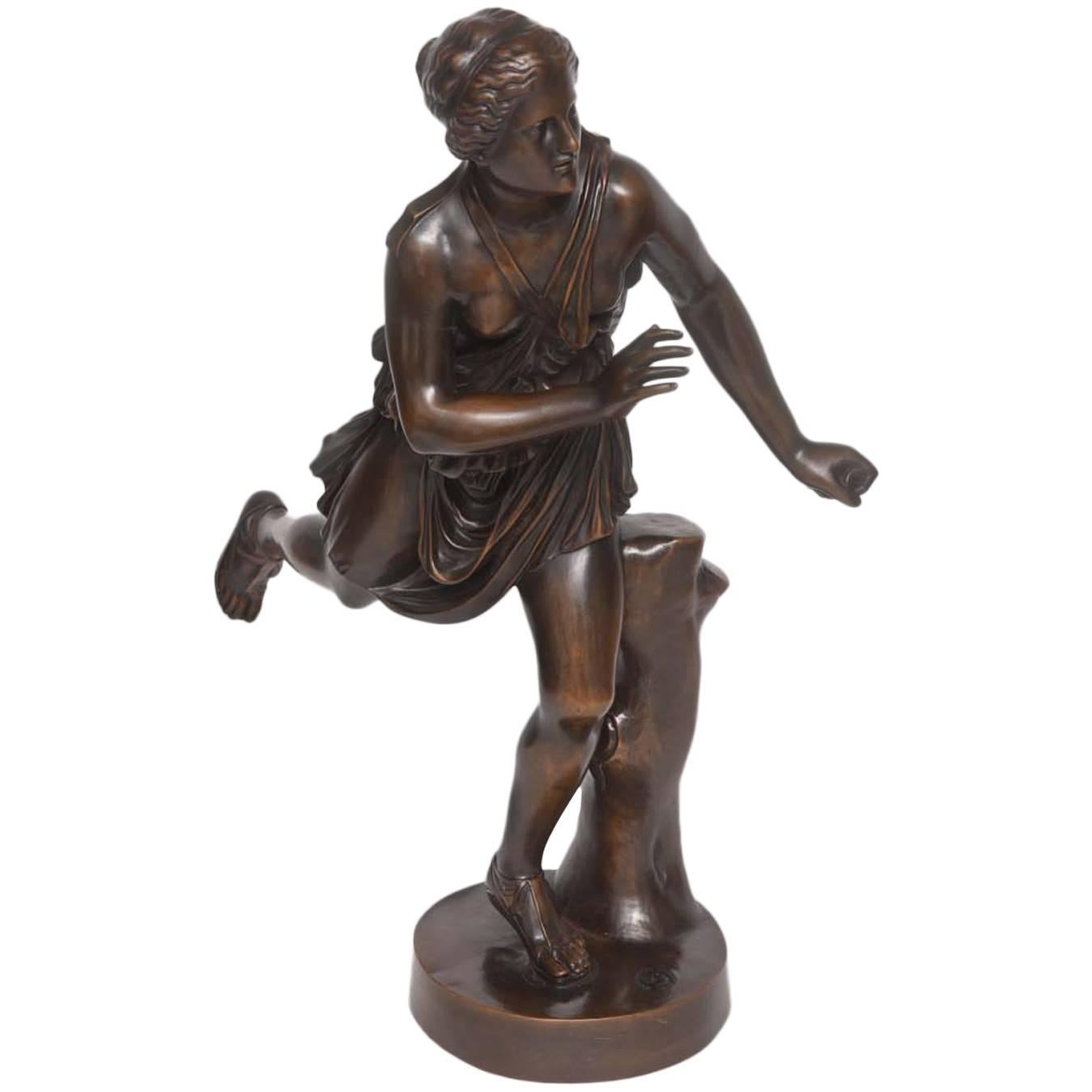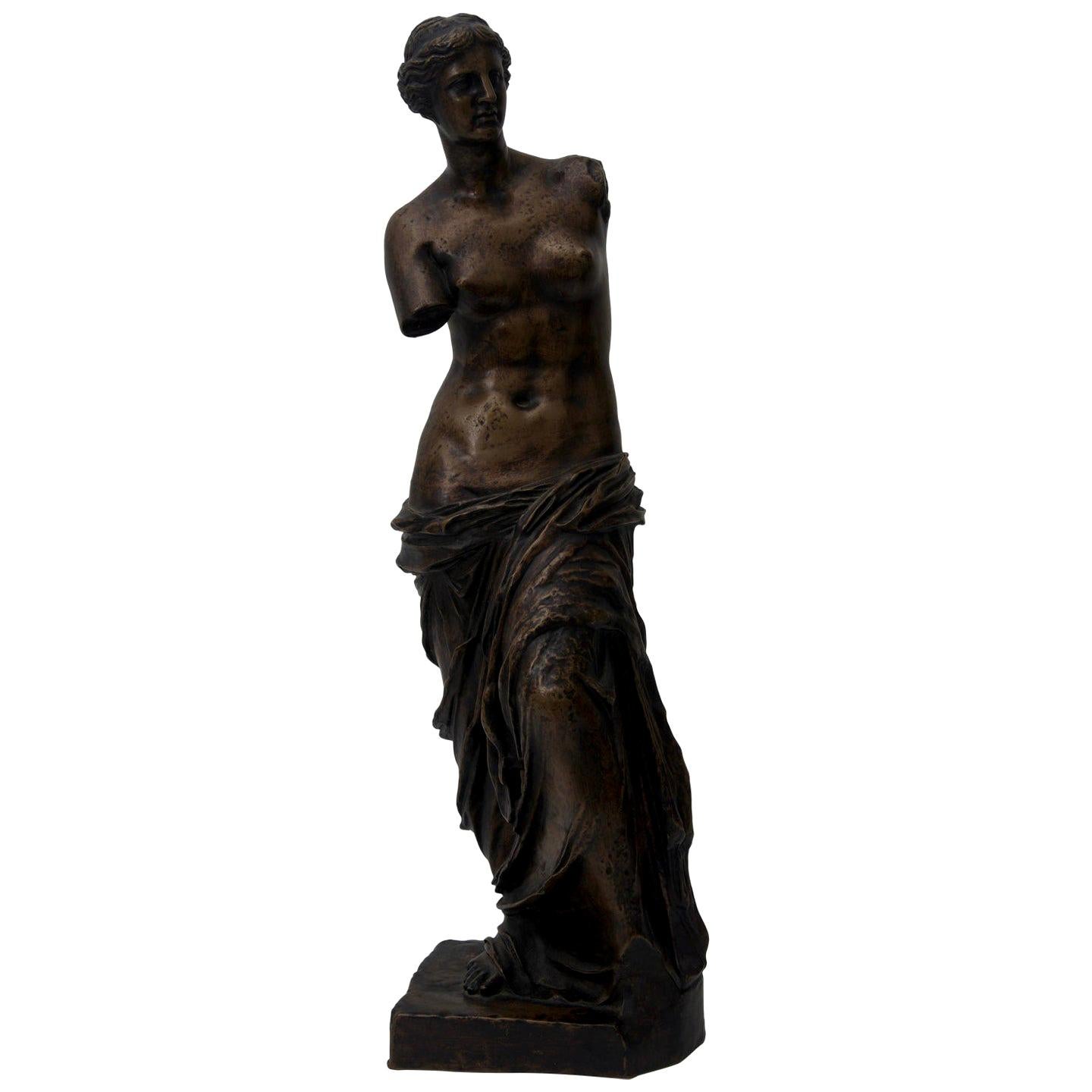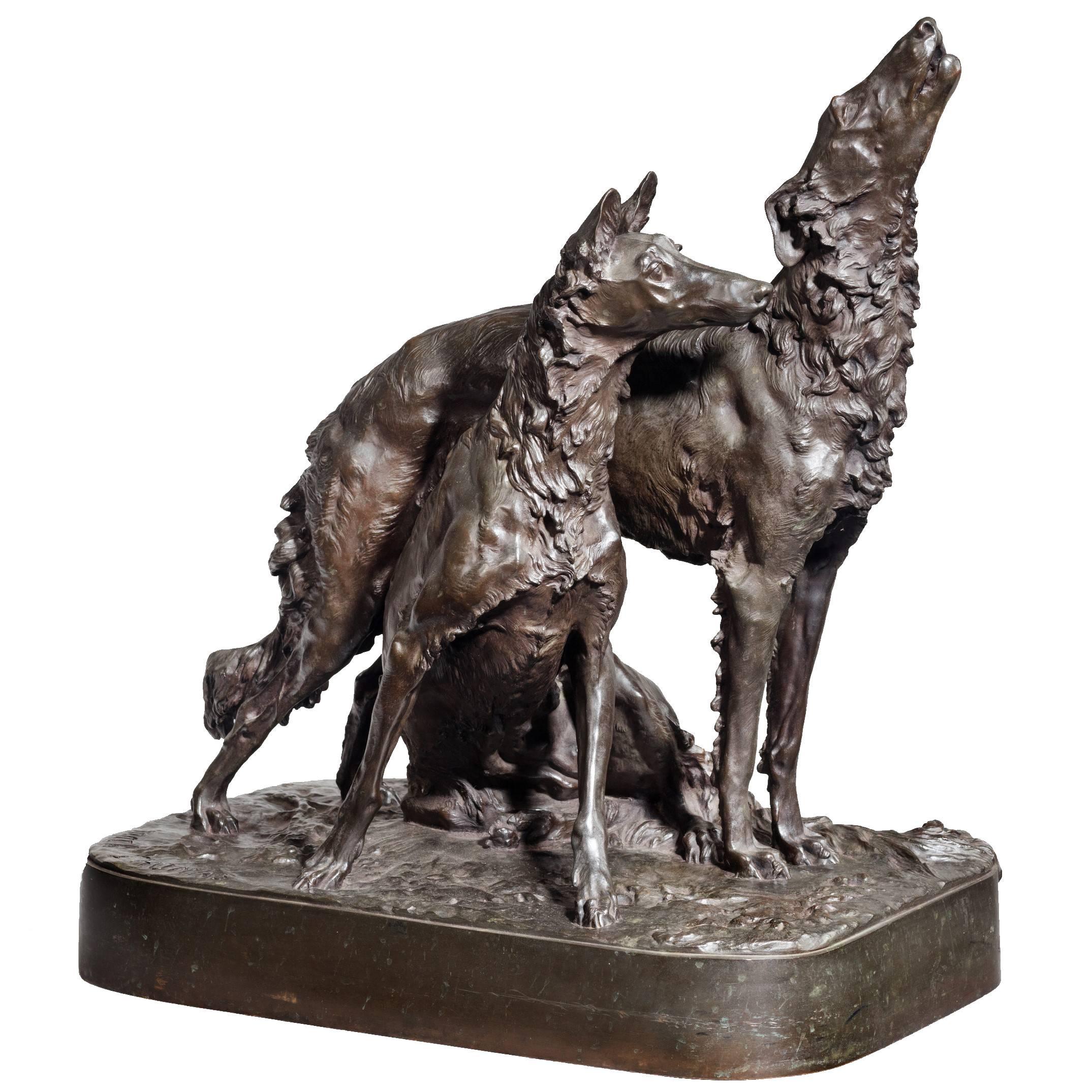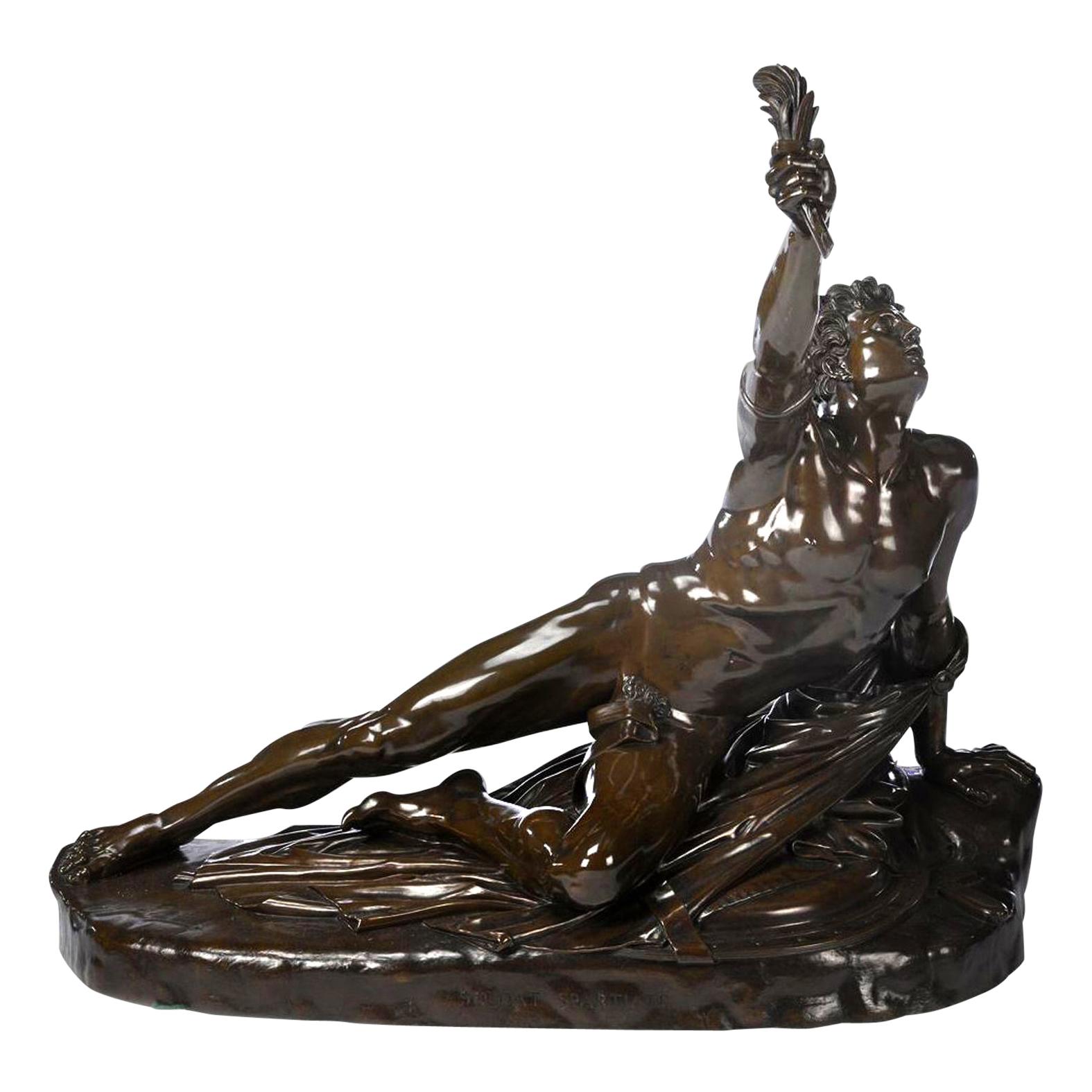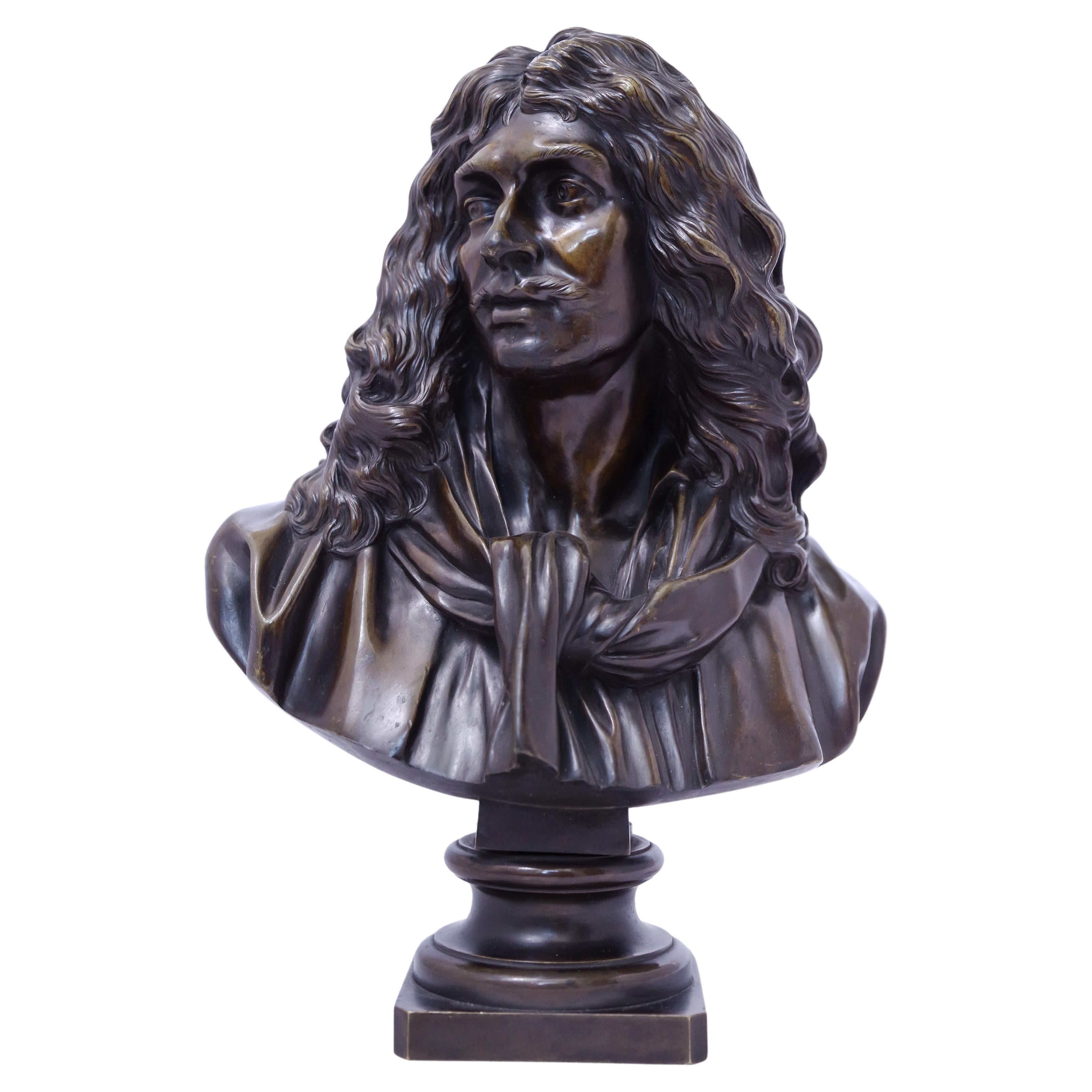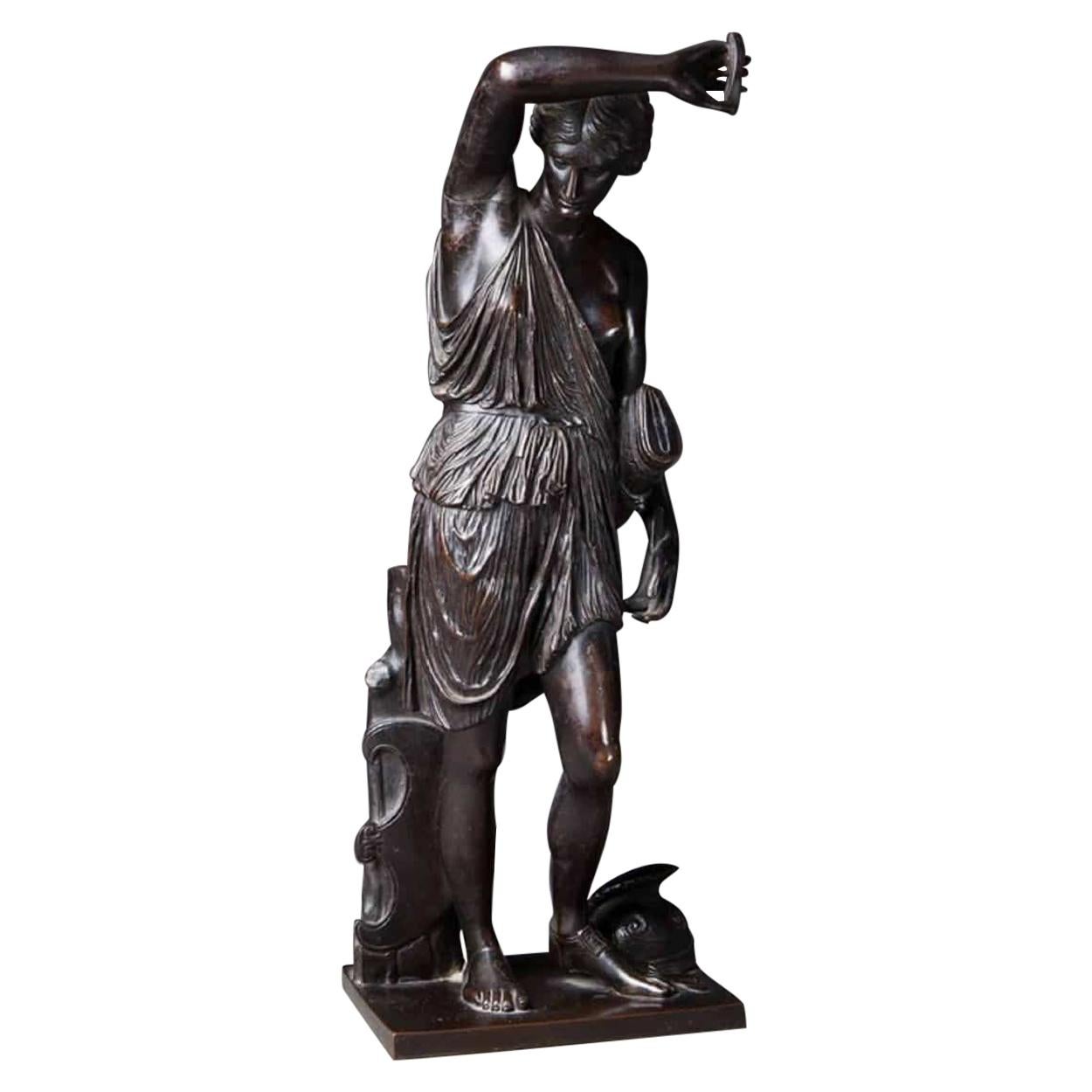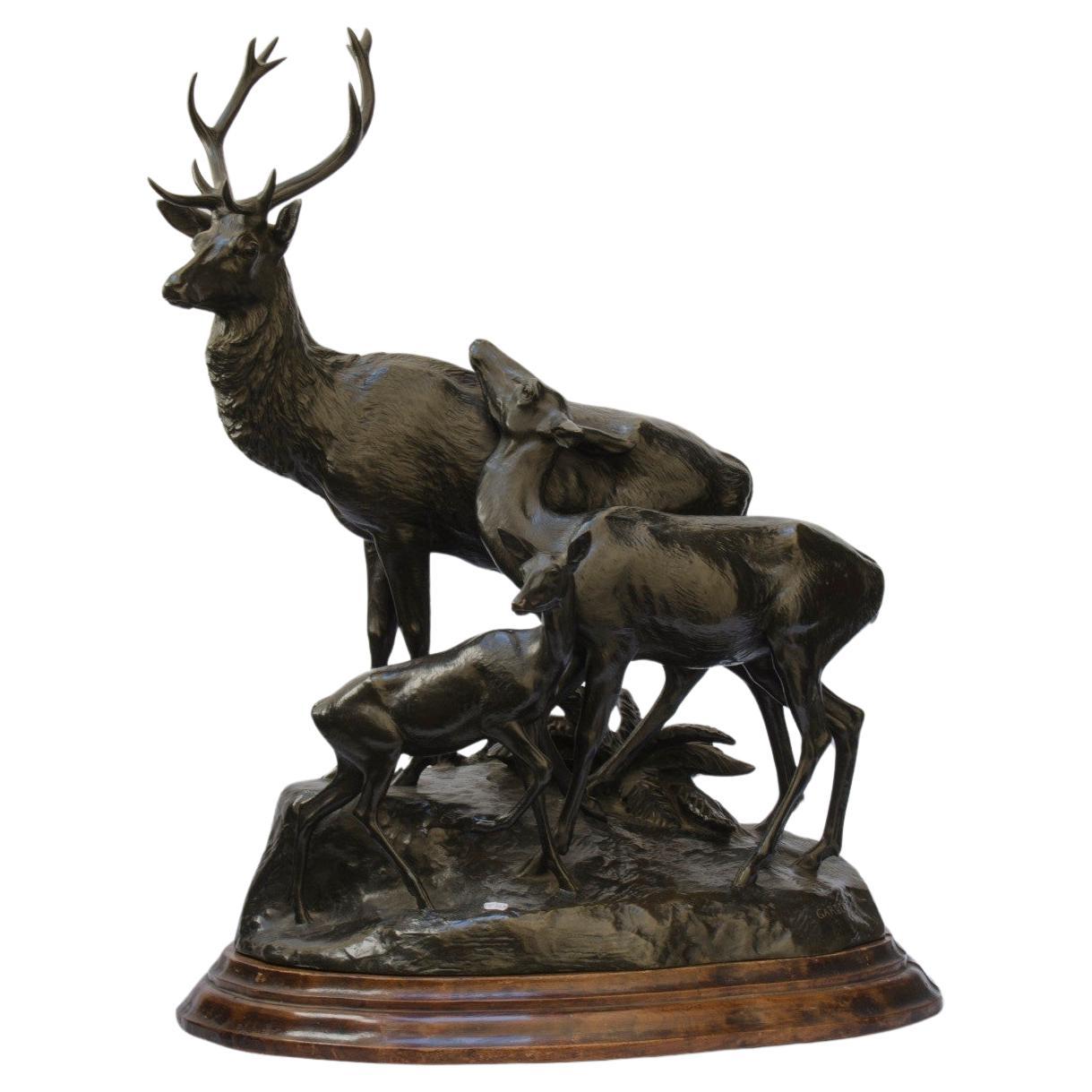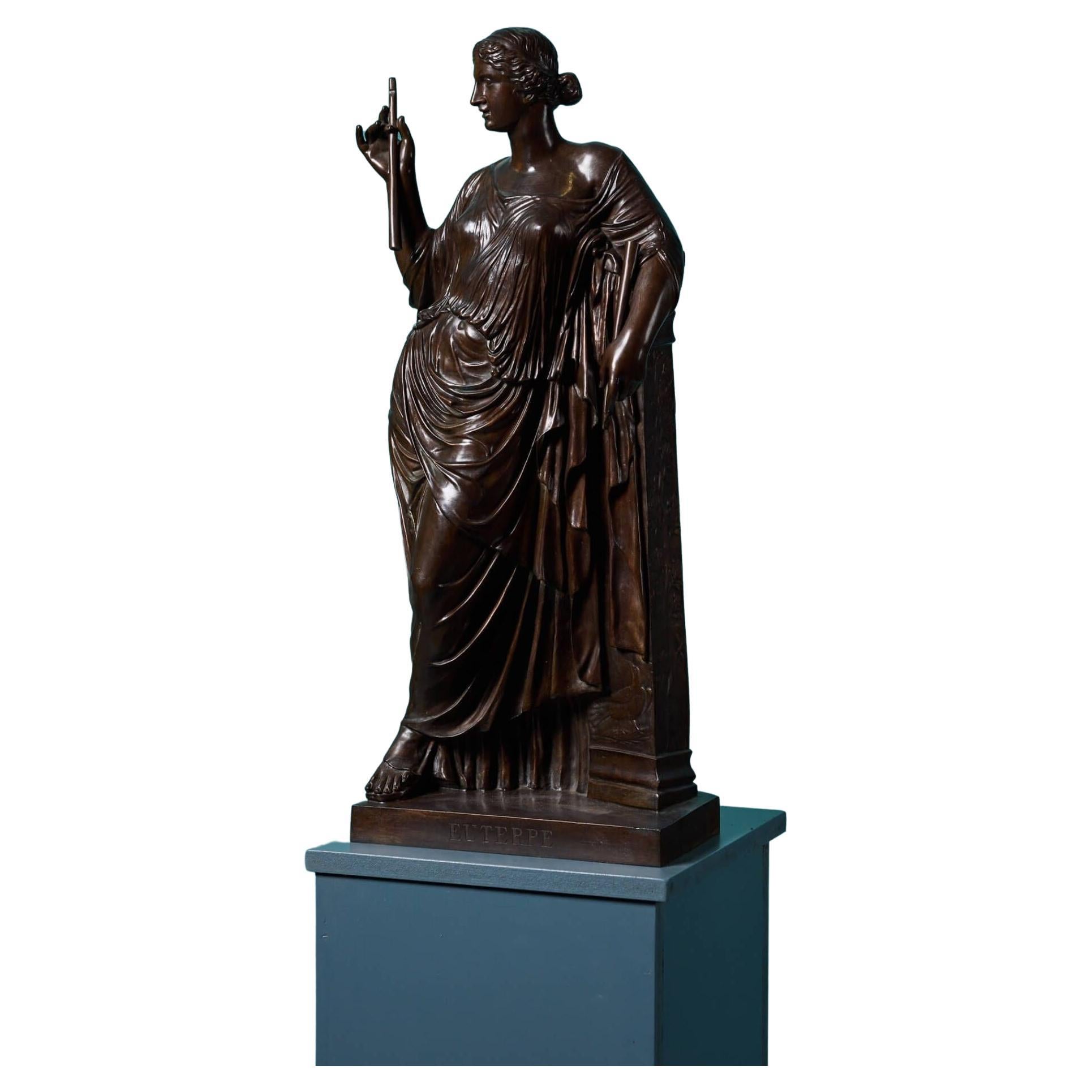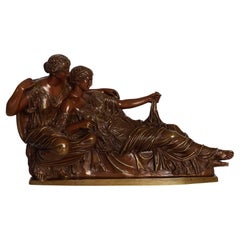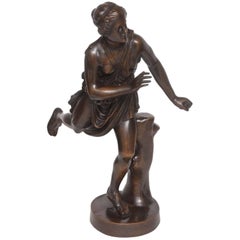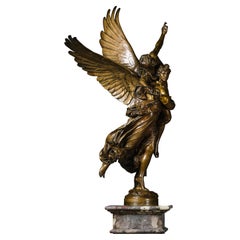
Bronzed Group of the Two Fates by Barbedienne
View Similar Items
Want more images or videos?
Request additional images or videos from the seller
1 of 8
Bronzed Group of the Two Fates by Barbedienne
About the Item
- Dimensions:Height: 20.48 in (52 cm)Width: 36.23 in (92 cm)Depth: 14.18 in (36 cm)
- Style:Classical Greek (In the Style Of)
- Materials and Techniques:
- Place of Origin:
- Period:
- Date of Manufacture:Mid-19th Century
- Condition:
- Seller Location:London, GB
- Reference Number:Seller: 131451stDibs: LU95634145663
About the Seller
5.0
Recognized Seller
These prestigious sellers are industry leaders and represent the highest echelon for item quality and design.
Established in 1975
1stDibs seller since 2012
362 sales on 1stDibs
Typical response time: 5 hours
Associations
The British Antique Dealers' AssociationInternational Confederation of Art and Antique Dealers' Associations
More From This SellerView All
- Patinated Bronze Antique Sculptural Group of Andromeda and Perseus by GrégoireBy L. Gregoire 1Located in London, GBThis fine antique French sculpture depicts a moment from one of the most famous tales from Classical mythology, that of Perseus and Andromeda....Category
Antique 19th Century French Classical Greek Figurative Sculptures
MaterialsBronze
- Bronze Figural Group of Perseus Freeing Andromeda by Jean Louis GrégoireLocated in London, GBThe patinated bronze sculpture standing on naturalistic circular base, signed 'L. Grégoire' on base Jean Louis Grégoire (French, 1840-1890) was born and died in Paris. Training ...Category
Antique 19th Century French Classical Greek Figurative Sculptures
MaterialsBronze
- Antique Patinated Bronze Sculpture of Diana by Ferdinand BarbedienneBy Ferdinand BarbedienneLocated in London, GBAntique Patinated Bronze Sculpture of Diana by Ferdinand Barbedienne French, late 19th Century Dimensions: Height 60cm, width 22cm, depth 22cm This...Category
Antique Late 19th Century French Neoclassical Figurative Sculptures
MaterialsBronze
- Classical Style Bronze Sculpture of Penelope by Cavelier and BarbedienneBy Pierre-Jules Cavelier, Ferdinand BarbedienneLocated in London, GBThis large patinated bronze antique sculpture depicts the Classical figure Penelope, the wife of Odysseus (Roman name Ulysses) who appears in ...Category
Antique Late 19th Century French Neoclassical Revival Figurative Sculptures
MaterialsBronze
- Large French Patinated Bronze Sculpture of David by Mercié and BarbedienneBy Marius Jean Antonin Mercié, Ferdinand BarbedienneLocated in London, GBLarge French patinated bronze sculpture of David by Mercié and Barbedienne French, circa 1878 Measures: Height 77cm, width 36cm, depth 27cm...Category
Antique Late 19th Century French Renaissance Figurative Sculptures
MaterialsBronze
- Orientalist Bronze Group of Biblical Subject by GuilleminBy Georges Emile Henri Servant, Émile GuilleminLocated in London, GBOrientalist bronze group of Biblical subject by Guillemin French, late 19th Century Height 80cm, width 60cm, depth 23cm This impressive patinated bronze sculpture is by the cele...Category
Antique Late 19th Century French Figurative Sculptures
MaterialsBronze
You May Also Like
- "Two Fates" German Bronze Sculpture after the Antique Cast by R. BellairLocated in Shippensburg, PAGRAND TOUR POLYCHROMED BRONZE GROUP OF "TWO FATES" Foundry cachet verso for "R. Bellair & Co, Berlin, Friedrichstr.182" Item # 012JIP09L A good Grand Tour classical bronze group bas...Category
20th Century German Grand Tour Figurative Sculptures
MaterialsBronze
- Bronze Sculpture of Atalanta by the F. Barbedienne FoundryBy F. Barbedienne FoundryLocated in West Palm Beach, FLThis beautiful 19th century grand-tour piece of the goddess Atalanta was created by the Ferdinand Barbedienne foundry in Italy. The piece is hallmarked with F. Bernedienne Fondeur on...Category
Antique Late 19th Century Italian Grand Tour Figurative Sculptures
MaterialsBronze
- ‘Gloria Victis’, A Patinated Bronze Figural Group by Mercié, Cast by BarbedienneBy Ferdinand BarbedienneLocated in Brighton, West SussexA Patinated Bronze Figural Group of ‘Gloria Victis’ (‘Glory to the Vanquished’), Cast by Ferdinand Barbedienne from the Model by Marius-Jean-Antonin Mercié (French, 1845-1916). ‘Gloria Victis’ (‘Glory to the Vanquished’). Bronze, gilt and dark brown patina. Signed 'A. Mercié', with foundry inscription 'F. BARBEDIENNE, Fondeur. Paris.' and A. Collas reduction cachet. The integral base titled 'GLORIA VICTIS'. This cast is part of a limited edition by the Barbedienne Foundry. France. Circa 1880. ‘Gloria Victis’ is one of the most recognisable and important works of sculpture of the nineteenth century and a definitive image of France’s historic national identity. The figure of glory, winged and wearing armour, carries a dying young warrior heavenwards towards fame and immortality. The compositional daring of the group must be admired for balancing two figures on the minimal support of one foot, wings spread in the moment before taking flight. Mercié was a student at the French Academy of Rome when the Prussians invaded France in 1870. Shortly after the war had begun, he executed a group depicting the figure of Fame supporting a victorious soldier. When news reached Mercié in Rome that the French had surrendered, he decided to alter his group, replacing the victorious soldier with a defeated casualty, thus transforming an allegory of ‘Glory to the Victors’ into one of ‘Glory to the Vanquished’. Completed in 1872, a year after the defeat of French soldiers against the Prussian army, the statue personifies a defeated but heroic France. The title is also a reversal of the famous formula, ‘Vae Victis’ (Death to the Vanquished), which the Gallic general Brennus exclaimed upon defeating the Romans in 390 BC. The figure of the fallen soldier was thought to represent Henri Regnault, a fellow sculptor of Mercié who was killed on the last day of fighting. Measuring 317 cm. high the original group of ‘Gloria Victis’ was unveiled in plaster at the Salon of 1872. It was bought by the City of Paris for the sum of twelve thousand francs and then cast in bronze by Victor Thiébaut for eight thousand five hundred francs. The bronze was exhibited at the Salon in 1875 and first placed in Montholon Square in the 8th arrondissement. In 1884 it was transferred to the courtyard of the Hôtel de Ville and in 1930, it entered the collection of the Musée du Petit Palais, where it can be seen to this day. The Thiébaut Frères foundry also cast Gloria Victis bronzes for the cities of Niort (requested 1881) Bordeaux (requested 1883), Châlons-sur-Marne (today, Châlons-en-Champagne; requested 1890), and Cholet (requested 1901). In 1905, the Danish brewer and art collector Carl Jacobsen was permitted to have an exact cast made of the original sculpture in Paris, on condition that the base was made 2 cm lower and bore the inscription “Original tilhører Paris By” (The original belongs to the City of Paris). It too was cast by the Thiébaut Frères foundry. Gloria Victis was one of Jacobsen’s most important and his last acquisition. Today it has been returned to its original position in the Winter Garden at Glyptoteket, Copenhagen, Denmark. The full-size plaster was shown again at the Paris Expositon universelle of 1878 alongside a bronze reduction by Barbedienne. By this time Antonin Mercié had entered into a commercial edition contract with the Ferdinand Babedienne foundry to produce bronze reductions of Gloria Victis, his most famous work. Gloria Victis is first recorded to have been produced in three sizes and by 1886 Barbedienne’s ‘Catalogue des Bronzes D’Art’ lists six sizes measuring 3/5, 9/20, 7/20, 3/10, 6/25 and 2/10, of the original. These reductions were produced by an invention of Barbedienne’s business partner Achille Collas. The Collas reducing machine was a type of complex mechanical pantograph lathe that enabled sculpture to be mathematically measured and transcribed to scale, in the round, thus making a reduced size plaster from which a bronze could be cast. Mercié's modern sculpture had become an instant classic, even receiving an entry in the Nouveau Larousse Illustré. The success of the group undoubtedly lay in the fact that it was admired not just on an aesthetic level, but also on a patriotic level, particularly in its commemoration of heroism in defeat. Immediately ‘Gloria Victis’ was recognised as a national artwork, capable of arousing patriotism and casts were ordered from Barbedienne as local memorials commemorating the war’s dead for cities across France. ‘Gloria Victis’ was considered so much a part of France’s national identity that for the 1900 Paris Exhibition, Ferdinand Barbedienne’s nephew Gustave Leblanc, loaned a bronze example to feature as part of l’Exposition centennale de l’art français. Literature: For an interesting account of the process of creating a reduction in bronze of the Gloria Victis by Barbedienne and illustrations of the casting and finishing of the bronze see: 'Ferdinand Barbedienne': Theodore Child; Harper's new monthly magazine, Volume 73, Issue 436, September 1886. ‘Contemporary French Sculptors’: The Century, Volume 33, Issue 3, Jan 1887. ‘Modern French Sculpture’: Harper's new monthly magazine, Volume 76, Issue 452, January 1888. S, Lami, ‘Dictionnaire des sculpteurs de l'Ecole française au dix-neuvième siècle’, Tome III. G.-M., Paris, 1914, p. 432. Peter Fusco and H.W. Janson, The Romantics to Rodin: French Nineteenth Century Sculpture from North...Category
Antique 19th Century French Figurative Sculptures
MaterialsBronze
- Bronze Sculpture of the Venus de Milo by F. BarbedienneBy F. Barbedienne FoundryLocated in West Palm Beach, FLThis cast bronze sculpture of the Venus de Milo dates to the 1860s-1880s and was cast by the F. Barbedinne foundry in Paris started in 1838 by Ferdinand Barbedienne and Achille Colla...Category
Antique Late 19th Century French Grand Tour Figurative Sculptures
MaterialsBronze
- Patinated Bronze Group of Two Hounds by Mark ThomasLocated in Lymington, HampshireAn attractive patinated bronze group of two hounds by Mark Thomas, showing one dog standing with muzzle raised in a howl and the other seated between its le...Category
Antique Late 19th Century French Animal Sculptures
MaterialsBronze
- 'The Soldier of Marathon' Bronze after a Model by Cortot Cast by BarbedienneBy Jean Pierre Cortot, Ferdinand BarbedienneLocated in Brighton, West Sussex'The Soldier of Marathon' - A large patinated bronze group after a model by Jean-Pierre Cortot, Cast by Ferdinand Barbedienne. Jean-Pierre Cort...Category
Antique Late 19th Century French Figurative Sculptures
MaterialsBronze
